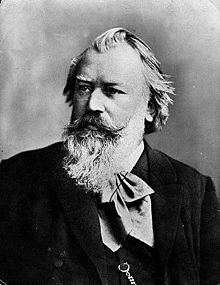The third of the “Three B’s” (along with Bach and Beethoven), Brahms adhered to the use of classical forms in his works but dramatically altered the musical landscape in terms of harmony and expressiveness. Included among Brahms’s masterpieces are four symphonies, two orchestral serenades and two overtures, much great chamber music and many pieces for piano, assorted concertos, the Hungarian Dances, the German Requiem and other choral works.
Given the preeminence that Brahms holds today as an orchestral composer, it is somewhat surprising to find that he did not have a single work in the orchestral repertory until he was nearly 40, and it was the brilliantly crafted “Haydn Variations” that helped secure his reputation as a symphonist. Brahms produced two separate versions of the work: the present one for orchestra and a second one for two pianos. Although the pieces are effectively identical, Brahms considered them two independent works rather than viewing one or the other as a transcription. Brahms himself premiered the piano composition in August 1873 with Clara Schumann. The orchestral composition had its premiere in November of the same year.
Notes by GHR
Variations on a Theme of Joseph Haydn
Op. 56a
Composed in 1873
By Johannes Brahms






